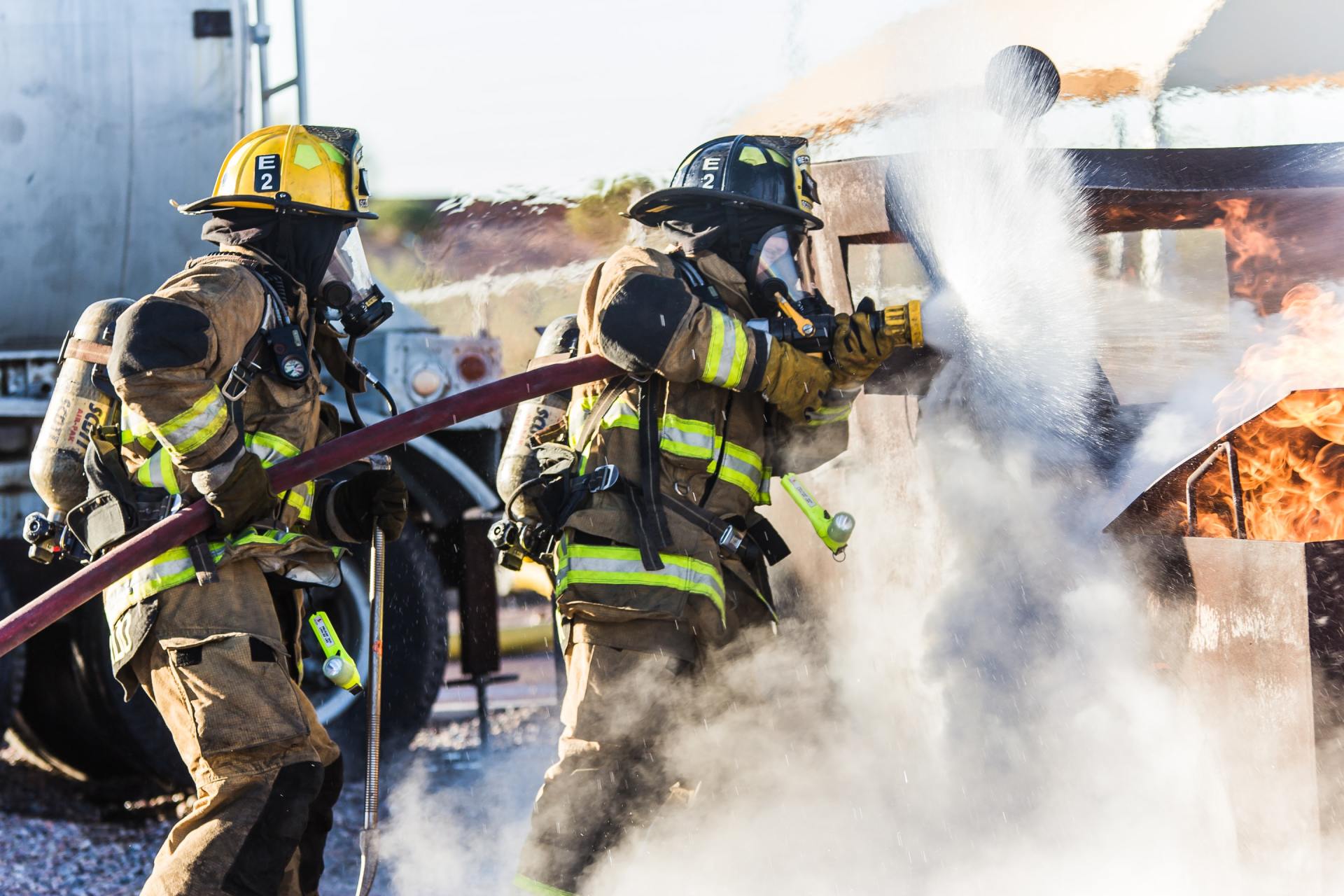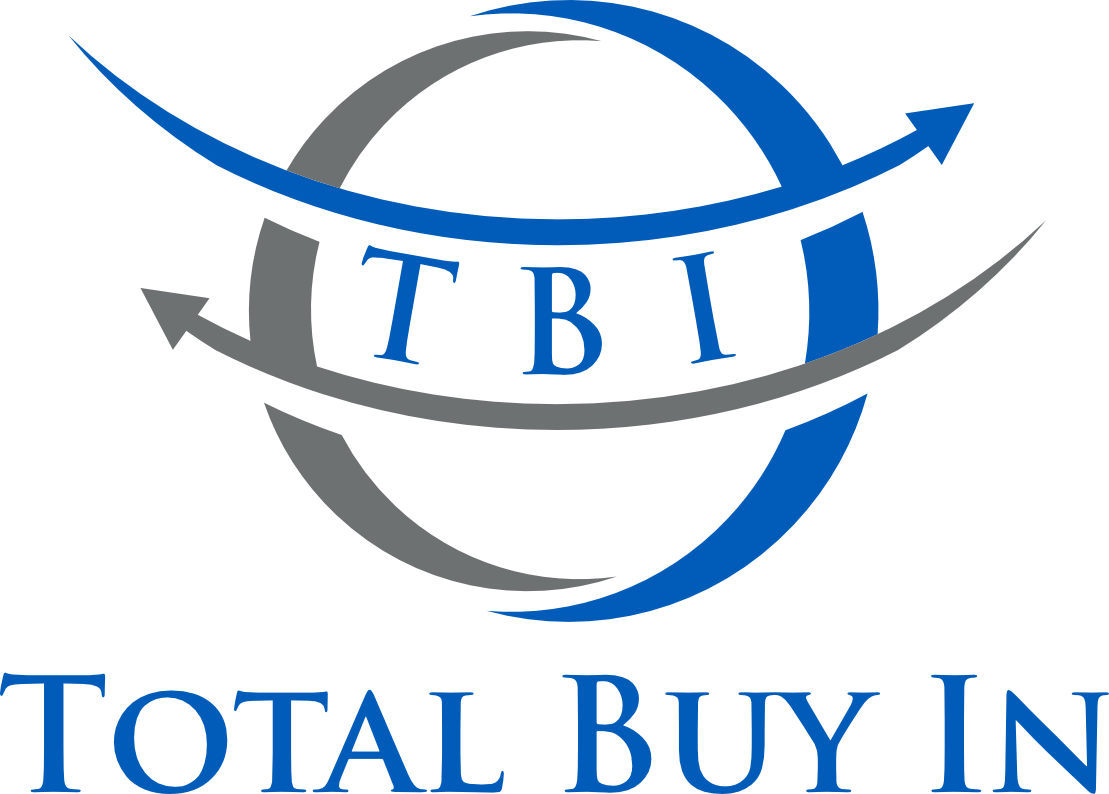Training Form
Tracy Pyke • April 29, 2020

More specifically I am usually addressing “compliance” issues with health and safety policies and procedures. The first place I always start is with the person in charge. The CEO, or President, or Owner, and I take them through Dr. John Demartini’s “Value Determination Process” or Darren Hardy’s “Core Values Assessment.” Why? Because it is a quick way for me to determine what values they hold paramount above all else. If it is customer service, then I look to see if the majority of employees are service-oriented and if the orientation materials reflect this. One of the companies I work with is a large homebuilder, and the president of the company believes above all else that good customer service is the key to a successful enterprise. To enforce this, he insists that his employees read Raving Fans by Ken Blanchard and Sheldon Bowles. He measures the success of his company by his JD Power ranking and score. He tracks customer service feedback by division and employee and rewards his highest performers in each division annually. All this develops and enforces a culture within the organization that is palpable. What does this have to do with safety? As a homebuilder in residential construction one would expect based on industry trends for this company to have a poor safety record, and yet it has one of the best within the province that it is located. It is no coincidence that a company with such a positive corporate culture, where the employees feel valued and included, has such a stellar safety record. Another client of mine is an early childhood development and day care center. They wanted to be the first accredited day care to receive a provincial COR for their Health and Safety program. The center was founded by a very driven and creative director who hired like-minded people to surround her. She founded her business with a “Project approach,” allowing her teachers to incorporate a curriculum based on the ideas and interest of the children. It gives a child a sense of ownership in their own learning and encourages them to ask questions to help fully understand their interests. In doing this she also empowered her workers with a sense of ownership. Because of the sense of pride and ownership naturally instilled within her workforce, it was very easy for her to not only tweak their already existing procedures into a Health and Safety program, but she was able to get all of her employees to participate in its creation and further to adopt it as part of the culture within the business. Your corporate culture IS your safety culture. In both of the examples above, both owners have empowered their employees and have made a very concentrated and deliberate effort to create and maintain a positive corporate culture. That culture is reflected daily in their operations INCLUDING their safety program. Because of the culture, there is an overwhelming sense of pride in both organizations that manifests itself daily in the behaviors and choices that the employees of both companies make. As such, both businesses flourish regardless of the state of the economy and have superior safety records independent of the norms of their respective industry averages.

Your employees will likely work much harder if they feel that what they're doing really makes a difference and that their efforts are noticed by you. Thank-you gifts don't have to be extravagant or costly. Small gestures are often remembered longer than financial bonuses. These small, entertaining rewards can also help promote a sense of fun in the workplace, which may go a long way toward helping you improve your corporate culture and retain key talent. Appreciation is a basic human need. Employees need confirmation that their work is valued. When employees and their work are valued, their satisfaction and productivity rise. They are motivated to maintain or improve their good work as people want to be respected and valued for their contribution. Turnover is often much lower in teams that have a strong bond with their leader, and this impacts a company's bottom line. This is why praise and recognition are essential to developing a positive corporate culture. The most successful leaders are those who recognize and reward their team's efforts. This not only builds trust, but it strengthens loyalty as well. Recognition and rewards take hardly any time and cost little or nothing to give. Giving recognition helps your employees to: Take pride in their work and in their job responsibilities Feel appreciated for their contributions “Go the extra mile” Heighten level of commitment to the organization Improve relationships between coworkers Be more open to constructive feedback Strive to meet and/or exceed performance expectations Support and promote a positive atmosphere in which praise prevails Get more enjoyment out of the work they do One of my favorite examples of recognition is the story of the NHL’s Calgary Flames and their “Green Hard Hat”. In the 2003/04 season, player Craig Conroy introduced a team building idea by having the team award a green hard hat to the hardest working player each time the Flames won. It was incredibly motivating as it was peer recognition for hard work and effort. As a result, the flames went on to play in the Stanley Cup Finals against the Tampa Bay Lightning. You don’t have to be a hockey fan to recognize the value and the impact that this simple gesture of recognition had. First of all, it was a motivator to win, as no-one got the hat or recognition if the team lost. So it inspired team play and cooperation. But it also awarded individual effort and recognized the one person that the whole team felt contributed the most to their success. According to author Kim Harrison, there are two aspects to employee recognition. The first aspect is to actually see, identify or realize an opportunity to praise someone. The other aspect is the physical act of doing something to acknowledge and praise people for their good work. If you are not in a receptive frame of mind you can easily pass over many such opportunities. Remember, good communication is one of the signs of a good leader, and employee recognition has a huge communication component. Recognizing people for their good work sends an extremely powerful message to the recipient, their work team and other employees. Employee recognition is, therefore, a valuable communication technique. Studies show that employees who are rewarded for going above and beyond are more productive and fulfilled, show greater loyalty and are eager to contribute to the organization in an impactful and meaningful way. In combination with providing training, a recognition program, whether formal or informal, will help improve employee retention. If you do not currently have an employee recognition program, my suggestion is to start small. Start discreetly, not even telling others about the change, but doing it and observing the results. Spontaneously praise people as this is one of the most highly effective forms of recognition. To many employees, receiving sincere thanks is more important than receiving something tangible. Employees enjoy recognition through personal, written, electronic and public praise from those they respect at work, given in a timely, specific and sincere way. Day-to-day recognition is the most important type of recognition as it brings the benefit of immediate and powerful reinforcement of desired behavior. Further, it sets an example to other employees of desired behavior that aligns with organizational objectives and reinforces corporate values. It gives individuals and teams at all levels the opportunity to recognize good work by other employees and teams, and it also gives the opportunity for them to be recognized on the spot for their own good work. Never underestimate the power of instant gratification. When a manager recognizes rare achievement or exceptional, its value increases. It can be as simple as a company-wide email or acknowledgment in a meeting. If you add a personal call or even shake hands to express your appreciation to the employee, you’ll be surprised at the motivation it will provide, not just to the employee receiving the praise, but to those who witness it as well. Even if you aren’t a manager, you can still look for opportunities to recognize others. The best formula for recognizing an individual for their efforts is: Thank the person by name. Specifically state what they did that is being recognized. It is vital to be specific because it identifies and reinforces the desired behavior. Explain how the behavior made you feel (if applicable). Point out the value added to the team or organization by the behavior. Thank the person again by name for their contribution. Recognition is a key success factor even at higher levels of management. Dr. Lawrence Hrebiniak, Professor of Management in the Wharton School at the University of Pennsylvania, states in his book Making strategy work: leading effective execution and change, “What’s absolutely critical…is that the organization celebrates success. Those who perform must be recognized. Their behavior and its results must be reinforced…Managers have emphasized this point to me time and time again, suggesting that, as basic as it is, it is violated often enough to become an execution problem…Give positive feedback to those responsible for execution success and making strategy work.” Here are 10 low- or no-cost ways to recognize employees. Acknowledge someone’s effort or contribution at a staff meeting. Send a card to the employee you wish to recognize. Give your employee a small token of recognition, such as a gift card to a coffee shop or movie theater. Send an email of appreciation to the company noting the employee’s effort or contribution or send an appreciative e-mail directly to the employee (following the format detailed above). Have lunch with the person and make it known that it is a reward for their service or effort and… As a last-minute surprise, give them the rest of the day off. Offer flexible scheduling or telecommuting days. Send handwritten thank-you notes when someone goes above and beyond their duties. Create "free day" coupons that a worker could use for a free day off – no questions asked – without using vacation or sick time. Give out "lazy Monday" coupons that allow one "free" Monday morning off. A few guidelines when offering recognition: Be genuine. Give it your full attention and be sincere. Be timely. Make the link between the behavior and the reward clear by recognizing the individual as soon as you can after the contribution or accomplishment. Be specific. A simple “thank you” is always welcome, but your impact is greater if you describe the accomplishment and the value that it created. For example, “Thank you, Tyler, for assembling the current safety statistics for me and entering them into the spreadsheet so quickly. The graphs and charts you prepared was above and beyond my expectation and made understanding the numbers exponentially easier. Give the action the "recognition" it deserves. If the recognition does not take place one on one or takes place during a meeting, make sure to carve out enough time to focus on the individual being honored. Treat the recognition as an event by not mixing it with other business. Keep it right-sized. Make sure the amount and type of recognition are appropriate for the behavior recognized. Personalize it if you can. Learning how your employees would like to be recognized, and how you can show your appreciation, is a vital step toward making sure that your efforts will be appropriate. Recognize that different people are motivated by different things and appreciate different things. Some people appreciate being recognized publicly; others may become embarrassed. One person might enjoy a gift certificate to a restaurant; another might prefer movie tickets. This is where taking the time to know really know your staff or the people you work with is important. Knowing their values and speaking to them in their communication style will make these gestures even more meaningful. Find out: What achievements your people would like to be rewarded for? What kind of reward would they like? as individuals and/or as a team? Would they rather celebrate with several milestones along the way, or have one big celebration when they hit the goal? Another helpful hint is to keep a small "recognition box" on hand. It can include small gift bags, a few movie tickets, note cards, gift cards, etc. This will help you to recognize and honor an achievement as soon as possible. Make your employees feel like partners. Let them know that management genuinely recognizes their contributions to the organization, and that they are vital members of the team. If you can do this, they will feel like the company is more than just a place to work. Recognition is priceless. It increases employee loyalty, enhances performance and generates greater success. So whether it’s a green hard hat or some other type of recognition, reward people who exceed expectation, and you’ll increase engagement, retention, and build a stronger corporate culture.

One of the biggest obstacles I encounter when taking on a new client is the issue of cost. Not for my services, but the safety system in general. The most frequently asked question is “How much is all this training going to cost?”. The answer is really up to you, and your vision of what you want your corporate culture and as a by-product, your safety culture to look like. You may have seen the following meme or quote floating around the internet: CFO asks CEO: "What happens if we spend money training our people and then they leave?" CEO: "What happens if we don't and they stay?" The point is an excellent one. I could spend years expanding on the theme behind the message, and why it keeps circulating, or I could just quote Richard Branson, one of the most prolific business minds of the 21st century, and a man who knows a thing or two about developing and maintaining a corporate culture who said "Train people well enough so they can leave, treat them well enough so they don't want to.” The key to this is creating the matrix of what you feel is “well enough”. What training is the minimum standard you need legislatively or even competitively within your industry? Are you satisfied with that? How much more training do you then need to provide to be the best, and to attract the best? The flipside to it is this: The concern is that you will train staff that will then leave is based on the premise that there is a better company to work for, but if YOU can BE the better company to work for, then this saying is to your benefit. Safety is an incredible recruiting, retention and engagement strategy. You will attract and retain the best workers when your company becomes the best and safest place to work. Strive to be the company that people want to leave TO and the cost of training becomes a moot point for two reasons. 1) You will save in the long run by not having to constantly train new staff due to turnover and lack of retention. 2) You will save on training by attracting the top candidates for your positions who will likely come with the necessary qualifications and there for will need less training upon hire. If you distill Mr. Branson’s quote to its essence, it breaks down to two elements. Train people to be the best they can be, and then treat them with respect and dignity. Allow your people to have a voice, and then really take the time to listen. This open dialogue will be the biggest driver in improving your corporate culture. We all, at our core, want to feel heard and valued. This does not mean that every suggestion needs to be followed. After all, you are the captain of your ship, and you need to chart the course that the crew is going to sail. But that doesn’t mean that they don’t have valuable insight to offer. The lookout in the crow’s nest may have seen the iceberg, but it was the stokers in the engine room that knew the Titanic was in real trouble first. If you take the time to walk the floor of your operation and talk with people on the ground level, you'll be able to ascertain where you may be taking on water… and who your best bailers are! Information is a business’s best currency, and this kind of intel will make you abundantly rich.

When was the last time you had a conversation with an entry level employee? Field staff, shop worker, janitorial department, when was the last time you checked in on a one on one with someone in one of these positions? Today? This Week? This month? If it was more than a week ago, why? Are you too busy? Isolated within a managerial bubble? In his book, The Compound Effect Darren Hardy talks about a client he mentored who was a CEO of a $100 Million company. The company, although performing well in sales metrics had a distinct lack of trust, engagement, and enthusiasm within the culture of the company. Mr. Hardy challenged the CEO, who hadn’t been inside some parts of his building in over 5 years to walk around the building 3 times a week and seek out at least 3 people he saw doing things right or who he had heard good things about and give them a personal acknowledgment of his appreciation. The result was a dramatic increase in employee engagement as they began to feel recognized and appreciated, and this increase in engagement had a ripple effect on customer interactions and improved customer experience, which increased repeat and referral business. I saw this effect happen in the opposite direction when a company I worked with expanded quickly. It had started as a small service company with a steady labour force of around 15 employees. It was a family company with the Father (CEO), Mother (CFO), Son (COO) and eventually Sister all working for the business. The CEO and COO were almost always in the field working. Their presence was felt daily and there was a very distinct family feel to the culture. Everyone had everyone else’s back. Then the opportunity to expand and work in multiple jurisdictions presented itself. The company hired an additional 30 employees, and for the next year, the CEO and COO took rotations visiting each site and maintaining constant contact with employees. They began to get noticed by some larger companies and asked to service even greater, more financially lucrative contracts as they had a reputation for quality and safety. So an additional 50 employees were brought on, and now they were servicing 12 sites for 7 clients in 4 cities. The workload became quite large and so responsibilities began to be delegated off to Foremen and Site Supervisors. This on its own would have been fine except that the visits from the CEO and the COO began to become less and less frequent. The culture within the company began to degrade. When I came in and we looked back at the statistics, there was a direct correlation between the frequency of site visits by senior management and a drastic increase in Injuries and Lost Time Incident claims. Ultimately this had an impact on the companies once golden reputation and the bids that were once so abundantly awarded started to disappear and go to other vendors. With less and less upcoming work the company was forced to start laying off employees, something it had never had to do in the 10 years it had been operating. When the correlation of site visits to the decrease in quality and increase in incidents was pointed out, the company developed a new policy that made it a requirement that at least one member of the senior management team is present on site at a minimum of once a week. Within six months the COO was on site almost daily, and the culture of the company had noticeably improved, but more notably, their quality index had increased and their incident rates had decreased to below the pre-expansion statistics. Challenge: In the next 24 hours, find the newest employee hired and ask them what their impression of the company is so far, and ask them if they can think of any improvement that can be made. Make their input part of your safety program.

The largest common denominator I see with the organizations I work with, who are struggling with their safety culture is that they have purchased a turnkey safety system. The story usually evolves like this: “We want to do a lot of work for large corporation ABC. They have a third party compliance company that verifies the safety systems of the sub-contractors they hire. We have always ‘just worked safe’ and had no documented system so to get on the bid list we hired a company who guaranteed their safety system would ‘pass’ the compliance verification or audit. We paid lots of money, they gave us a binder and some forms. The system passed as promised and we were awarded the bid.” “But now we have all this paperwork to file. The guys are pushing back and not filling it out. The company that put together the manual said that it would ‘handle all the paperwork’ and for X dollars will even do our inspections and investigations for us. All the paperwork seems to be getting done, but we don’t really know what is happening with safety, and our guys are starting to have more and more incidents, and our costs have gone through the roof!!” Now to be fair this is worst case scenario, but it is unfortunately very common. Often the fix is to then hire a full time safety professional to come in and manage the program, who does their best, but are saddled with a program that may or may not make sense to the organization and that the majority of the employees do not understand or embrace. This is a losing proposition. My best advice is this: Don’t buy your system, be your system. Especially if previously you seemed to have a process in place that worked. That probably means you were leading by example. If you have already invested money in a templated system, the good news is, not all is lost, and in fact, you have a great template that will save you time in development, but YOU still need to invest time in development! If you want your employees to buy into any system, whether that is Safety, or Quality, or the introduction of a new process or procedure, the key is for YOU to be invested. You need to be able to explain in detail the WHY behind the move. Why does it matter to you, and there for the company. If you can’t explain your system to any employee who asks how can you reasonably expect for them to follow it? You need to know your system and be able to discuss it with passion. Now I am not saying that you need to do your best Tony Robbins impression every time you answer a question about your safety program, although imagine how much passion you would ignite for it if you did!! What I am saying is that if you talk about safety from a perspective of “it’s one of those things we just do because we have to” that message will be amplified and become the culture. If you talk about safety from the perspective of “this is something I believe in, live daily, and hold as a high value” that is culture you will cultivate. As every safety propaganda poster ever created will tell you “safety begins with you”, and it is true. So if you are in a leadership position, it is incumbent upon you to do just that: Lead. Your actions will be those that are followed, so be your system, be hands on in its development, and live the principles you create. That is the best way to influence how the system is adopted and ultimately shape how the culture evolves. Sean Tyler Foley, Total Buy In



